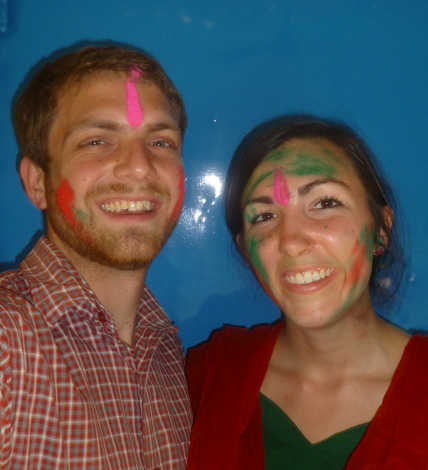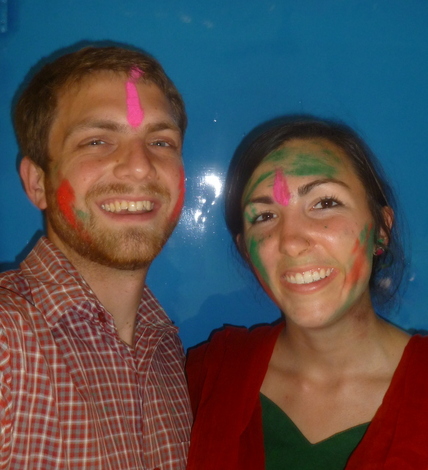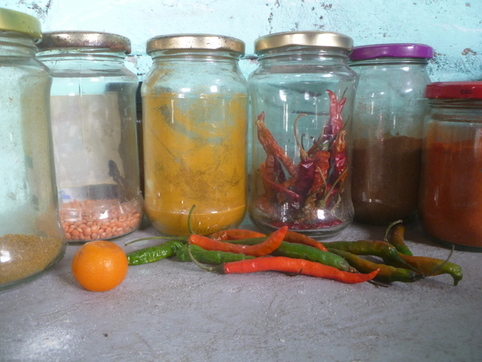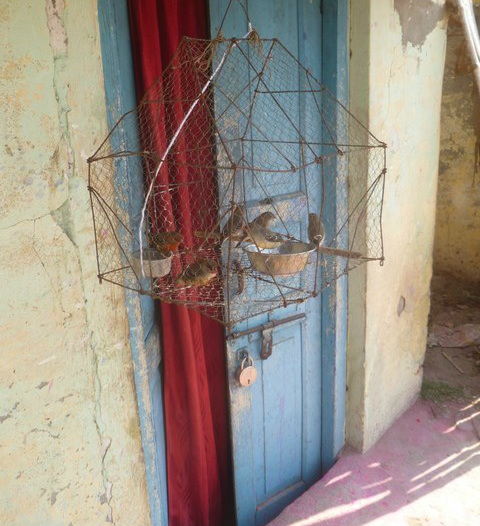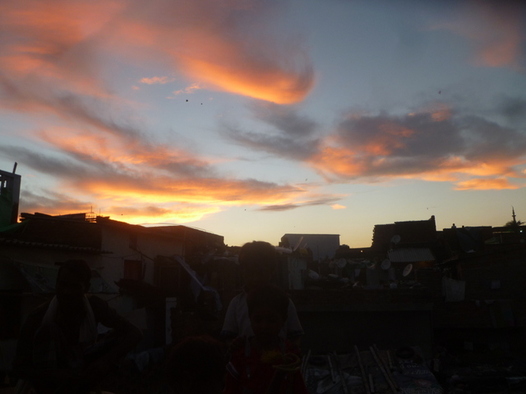“What is it?” I asked. “What is she saying?” My boss furrowed her brow. “Uh… it is a kind of disease. I am not sure how to say in English.” Fear began to gnaw open a space through my stomach, but that didn’t show up on the screen. “Well, what kind of disease?” I asked again. My boss was thinking. “Mmmm… my father has this kind of disease. He is very elderly. I will look up the words and tell you later. Maybe tomorrow.” Maybe tomorrow? We moved onto the next test in the next room, and I worried over whatever terrible thing the nurse thought she had found in my abdomen until the next day when my pestering texts and phone calls finally elicited a response from my boss: gallstones.
That didn’t seem too scary. I left it alone, not convinced that there was any truth behind it anyway. What could they really tell from such a scrambled, nondescript image? ThThen a few months ago I was under the jellied ultrasound wand again, here in India, investigating what seems now to be completely unrelated stomach pain. “Gallstones,” the Indian doctor told me in English. This time he pointed them out to me on the crystal clear image enlarged on the screen in front of me. No getting out of it this time.
I began telling my neighbors about the upcoming operation. Most of them were really worried about it, since nearly everyone knows someone who’s died in hospital. There’s very little understanding of anatomy or healthcare, so the reasons why some operations work and others don’t remain a mystery. Some people wanted to take me to see their doctor and get a second opinion. Others wanted to stay at the hospital with me. “Your husband can just stay home and I’ll be with you every minute while you’re there!” one friend told me. The most restful recovery my Indian friends can imagine is one surrounded by a great cloud of concerned friends and relatives, so the idea of my husband and I “alone” in the hospital pained them. Someone else confidently told me that there was no need for surgery when eating enough papaya would be sufficient to get rid of the stones.
An old grandmother I know took me to meet her son, who promptly took a matchbox from off the shelf and showed me the kidney stone he passed a few months ago. What’s the appropriate response when a stranger shows you the lump of sandstone that he passed through his body? I raised my eyebrows with an appreciative, “Oh,” and inquired about the treatment that had produced this unique keepsake.
Another family had a grandmother visiting from the village who I had never met before. When I told them about the upcoming surgery, she related the story of her sister-in-law’s sister’s somebody who had gotten surgery (though it was unclear by the end exactly what kind of surgery it had been). “She didn’t survive that,” the grandmother concluded with sagely detachment, staring ahead of her. “Nope, she’s dead.” I felt like laughing, but the family seemed embarrassed by their relative’s unsettling anecdote. Her daughter began explaining to the woman what a good friend I was and how long they had known me. Her expression didn’t change, but the grandmother seemed to take the hint. “Pray to God,” she said, turning to me. “If He wills it, all will go well.”
The morning of the surgery, I was feeling a bit nervous in spite of the rational knowledge that this was a fairly safe procedure. A man with a folder in his hand arrived in the waiting room. “Aiye,” he said, and turned to leave. “Come.” We followed. He took us upstairs to the general ward, where two nurses were tasked with “helping” me change clothes: one of them dressed me like an invalid doll, and the other observed. A little while later, another group of nurses and doctors came in to give various shots and start an IV of antibiotics and then glucose. We could communicate well enough in Hindi, but there was rarely explanation or warning of what was coming beforehand. We read books and listened to the sounds of Indian music videos and soap operas wafting through the dividing curtain between my bed and the rest of the ward until eventually, another person appeared at the foot of my bed: “Aiye.” I followed her downstairs, took off my shoes outside of a siding door, walked barefoot into the operating room, and laid down on the table, awake. Watching the surgeons make their final preparations next to me was unnerving. I felt as though the operation was going to start at any moment with me still lying there fully conscious! The anesthesiologist noticed my agitation and asked why I was so nervous. I explained that in my country, the patient never sees the inside of the operating theater because they’re already out cold by that point. He laughed and assured me that I “wouldn’t know anything” while the surgery was going on. I had the irrational fear that the drug might not be able to knock me out of such a hyper-vigilant state, but no sooner had I watched the syringe empty into my arm than my eyes went out of focus and I fell asleep wondering how long it would take to fall asleep.
For some reason, I only spoke in Hindi while I was coming off the anesthesia, even in response to A.’s questions in English. While I was still coming to, the doctor called A. into another room where my gallbladder was sitting in a bowl. The doctor sliced it open in front of him, dug out six gallstones, and handed them to him in a plastic bag.
After a day of painful, nauseous recovery and a night in the ward, we headed back to the slum. I was still feeling too weak to do much of anything, but our neighbors took such good care of us. One family made lunch for us, and after coming to visit in the afternoon, decided to cater our dinner as well. When we tried to protest, the mother put on her stern face and waved away our concerns with her hand as she started resolutely down the stairs to go home and begin cooking. The next day, our landlady downstairs graciously made roti for us since my abs still weren’t up to kneading the flour. “Why shouldn’t I do it? We all live in one house!” she said. We have felt very loved by all the help and the stream of visitors.
And we had joked about what to do with the gallstones, but now it’s become obvious that the real purpose was for show-and-tell. After making their inquiries after my health and dispensing advice on what I should avoid eating or doing while I recovered, people always analyzed the stones in the plastic bag, or if we had forgotten to offer, they would ask to see them. Maybe I need to find a matchbox for them.
